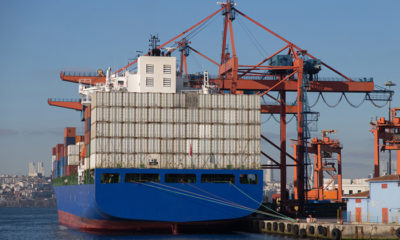The mining sector is a crucial component of the industrial value chain, providing essential raw materials for the manufacturing and construction sectors.
Similar to the oil and gas sector, Nigeria possesses substantial reserves of metallic minerals, offering the potential for significant economic diversification.
However, Nigeria is yet to fully exploit this potential for industrial growth. Challenges confronting the sector include inadequate infrastructure for mineral extraction, processing and transportation, illegal mining activities, regulatory hurdles, and limited access to finance.
Almost a decade ago (in 2016), the FGN introduced a roadmap for the mining industry, to stimulate its growth and by extension, boost its contribution to total GDP to at least 3%.
Over the past five years, growth in this sector has averaged just 13.2% y/y. A positive surprise was the 25.5% y/y growth recorded in FY2022.
The latest national accounts for Q2 ’23 show that the mining and quarrying sector grew by 31.9% y/y in Q2’ 23 vs 20.9% y/y recorded in the corresponding period of 2022. On a q/q basis, it expanded by an impressive 342.2% but from a low base.
Despite growing global demand for select minerals driven by clean energy initiatives, the contribution of mining to total GDP in Nigeria is significantly low relative to other African counterparts. Increased investments (foreign and domestic) into the mining sector, better regulation and structure will improve mining output and positively impact GDP figures.
In 2015, the FGN identified seven strategic minerals – coal, bitumen, lead and zinc, limestone, iron ore, barites, and gold, for priority development.
This initiative is aimed at revitalizing the mining sector and diversifying the economy. However, to promote the development of these strategic minerals, it is crucial to expedite the planned concession of the Nigerian Iron Ore Mining Company (NIOMCO) and Ajaokuta Steel Complex Limited (ASCL).
Additionally, ongoing efforts to concession bitumen blocks should be completed to enable import substitution for steel and steel products.
The FGN should also provide support to local baryte miners and encourage processing facilities to add value, particularly for export purposes.
Regarding gold, Nigeria possesses substantial deposits with diverse applications, including jewelry, electronic plating, medical services, dentistry, and as a store of value. The FGN’s focus on the gold sector centers around the Presidential Artisanal Gold Mining Initiative (PAGMI), aimed at formalizing and organizing artisanal and small-scale gold miners across several states. Upon the implementation of PAGMI, the CBN will serve as the primary off taker of artisanal gold at international prices, thereby bolstering Nigeria’s bullion gold reserves.
We note that gold accounted for 3.4.% of Nigeria’s gross external reserves in 2021.
On the other hand, Nigeria boasts commercial quantities of “future minerals” like lithium, nickel, cobalt, and tin. However, these minerals are yet to be designated as strategic in Nigeria. There is a supply gap with these minerals given growing global demand. Therefore, creating revenue diversification opportunities for the FGN. For example, following the discovery of high-grade lithium deposits in Nigeria, several investors and mining companies have expressed interest in mining this resource.
Notably, a Chinese mineral separation company has been selected to construct Nigeria’s first lithium processing plant in Kaduna, with plans to manufacture batteries for electric vehicles locally.
We note that insecurity remains a prominent challenge in the mining sector as some mining regions remain prone to banditry and terrorism. The sector is also characterized by widespread illegal mining (i.e. mining operations that take place without state approval, mining licenses, land rights, or permissions for mineral exploration or transportation). This practice leads to smuggling, frequent violent communal clashes and environmental damage.
The absence of proper regulation poses a challenge for sustainability and revenue collection.
The Solid Mineral Development Fund (SMDF) established in 2007 and Mineral Sector Support for Economic Diversification Project (MinDiver Project) established in 2017 have been key government initiatives in providing funding for the sector.
However, funding is still inadequate. According to the latest data from the CBN, credit allocation to the sector by DMBs increased by 33.8% y/y to N84.4trn in Q1 ‘23. However, on a q/q basis, credit allocation to mining declined by -5% from N88.9trn in Q4 ’22.
The FGN has begun the review of the 2007 Minerals and Mining Act, which is one of the primary instruments governing minerals and metals policy in the country. However, a unified approach to regulating mining activities is essential, involving cooperation between federal, state, and local
governments.
For instance, currently, mining rights must be obtained from the FG, while land access rights fall under the jurisdiction of states and communities. Simplifying regulatory approvals into a single point of access would significantly boost investor confidence in the industry.
Other challenges facing the sector include the infrastructure deficit, geological data deficiency, double taxation as well as limited access to international markets and global supply chains.
The current administration has the responsibility of expediting fiscal consolidation efforts, primarily aimed at revenue generation, and has articulated ambitious strategies to unlock the potential of the solid minerals sector to attract foreign direct investment within the next 3-4 years.
These strategies encompass geospatial mapping initiatives to pinpoint mineral-rich areas for economic growth, partnering with state governments and security agencies to tackle security issues, crafting a new mining industry roadmap to reinvigorate the sector and establishing a framework to formalize and legitimize illegal mining activities.
The global mining sector increasingly considers environmental, social, and governance (ESG) factors. It is imperative that Nigeria’s mining sector embraces environmentally friendly mining methods and actively address ESG issues across all operations, acknowledging both risks and opportunities.
This approach not only benefits governments, shareholders, and workers but also the communities with mining activities.
Nigeria’s mining sector holds immense promise as a key driver of economic growth and diversification; with the right policies, investments, and commitment to responsible mining, Nigeria can transform its mining sector into a catalyst for job creation, foreign exchange earnings, and industrialization.


 Forex3 weeks ago
Forex3 weeks ago
 Naira3 weeks ago
Naira3 weeks ago
 Billionaire Watch2 weeks ago
Billionaire Watch2 weeks ago



 Naira3 weeks ago
Naira3 weeks ago






 Naira2 weeks ago
Naira2 weeks ago




 Naira1 week ago
Naira1 week ago




 Naira4 weeks ago
Naira4 weeks ago






 Naira1 week ago
Naira1 week ago





















